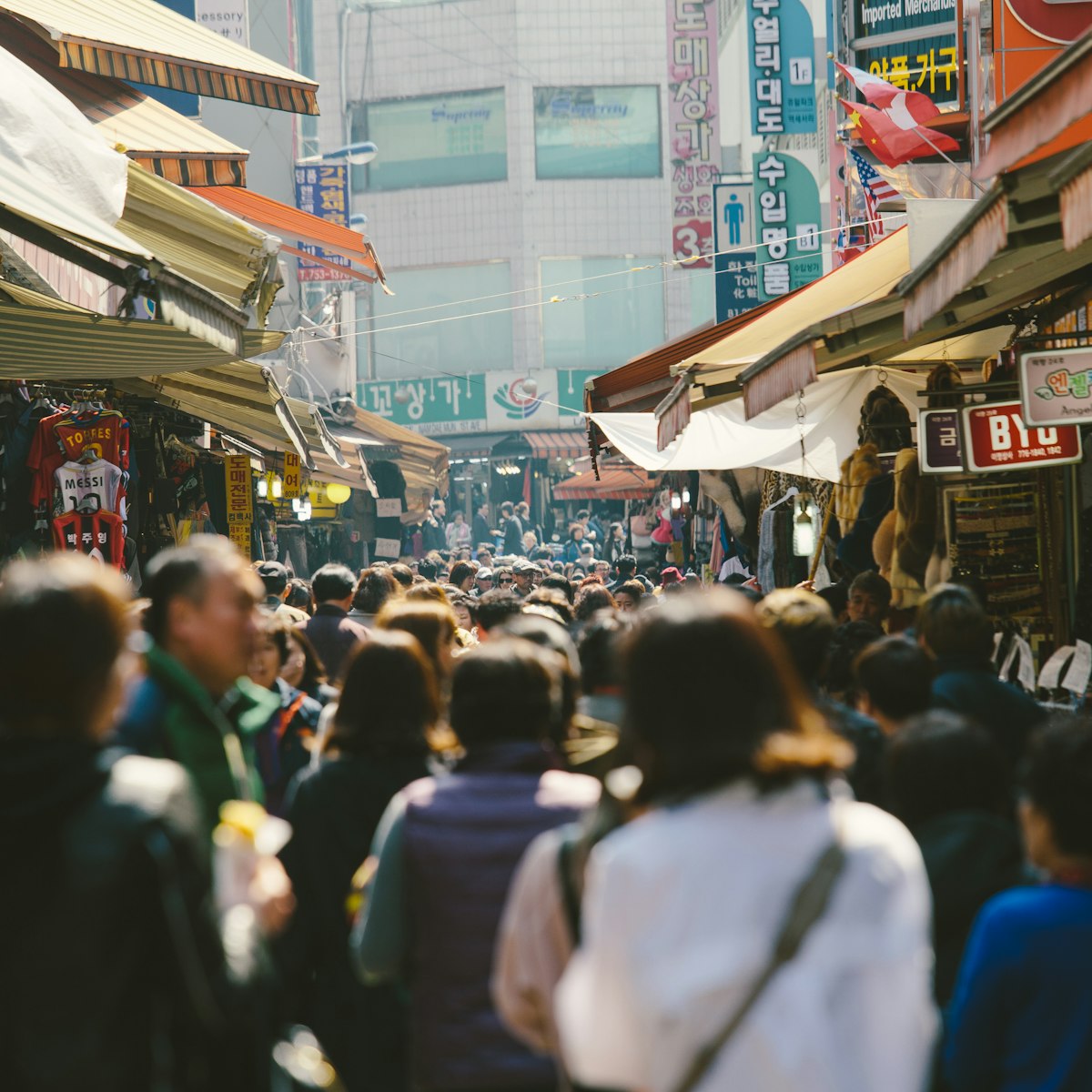Unquestionably the highlight of any trip to the DMZ is the Joint Security Area (JSA) at Panmunjeom. An improbable tourist destination, it's here where the infamous Military Demarcation Line separates South and North Korea. Soldiers from both sides often stand metres apart eyeballing one another from their respective sides of the blue-painted UN buildings. You'll be taken inside the meeting room – where the 1953 truce was signed – the only place where you can safely walk into North Korea.
Tours kick off with a briefing by US or Republic of Korea (ROK, South Korea) soldier guides at Camp Bonifas, the joint US–ROK army camp just outside the DMZ, before being transferred to another bus to the JSA.
Within the blue conference room at the JSA, where official meetings are still sometimes held, microphones on the tables constantly record everything said, while ROK soldiers stand guard inside and out in a modified taekwondo stance – an essential photo op. Their North Korean counterparts keep a steady watch, usually, but not always, from a distance.
Though your tour will be a quiet one, the soldier guide will remind you that this frontier is no stranger to violent incidents. One of the most notorious was in 1976 when two US soldiers were hacked to death with axes by North Korean soldiers after the former tried to chop down a tree obstructing the view from a watchtower. Camp Bonifas, the joint US–ROK army camp just outside the DMZ, is named after one of the slain soldiers.
Back on the bus you’ll be taken to one of Panmunjeom’s lookout posts from where you can see the two villages within the DMZ: Daeseong-dong in the South and Gijeong-dong in the North. You'll also see the Bridge of No Return where POW exchange took place following the signing of Armistice Agreement in 1953.
Ironically, the forested surrounds here, long since abandoned, are some of the most ecologically pristine in Korea, even thought to be home to the Siberian tiger.








